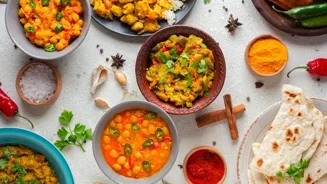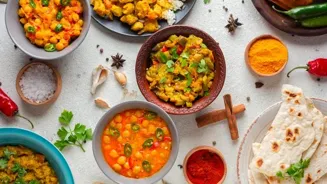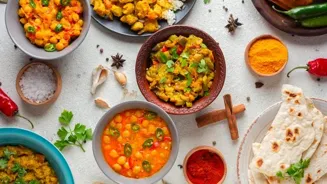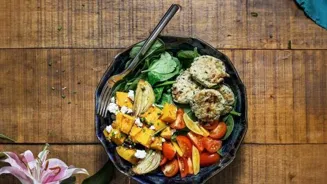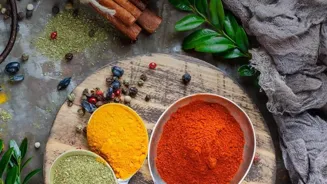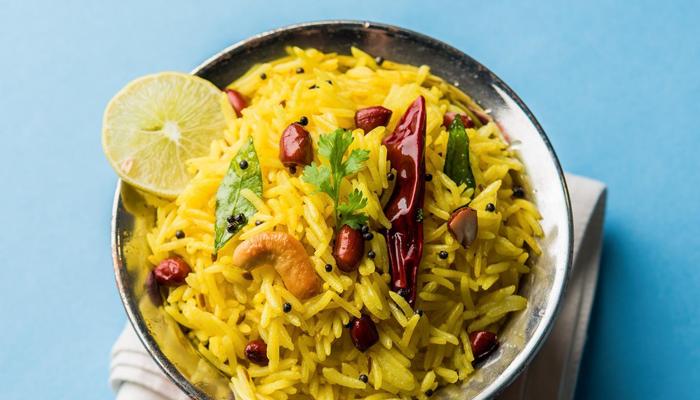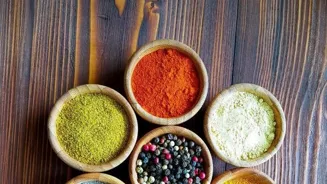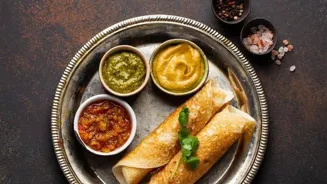Dive into the vibrant world of Indian Thali - a culinary masterpiece and cultural symbol. Taste tradition in every bite!
In the colorful tapestry of Indian cuisine, the Thali stands out as a vibrant representation
of culinary diversity and tradition. More than just a meal, it's an immersive experience, a journey through flavors, textures, and regional specialties – all artfully arranged on a single platter.
The Thali, in its essence, embodies the concept of 'wholesomeness' representing a complete and balanced meal. It’s a testament to the Indian philosophy of offering guests not just food, but also sustenance and nourishment for the body and soul.
Across the length and breadth of India, different regions have their own unique interpretations of the Thali, reflecting local ingredients, cooking styles, and cultural preferences.
From the spicy curries of Rajasthan to the subtle sweetness of Gujarat, each Thali tells a story of its origin, offering a glimpse into the rich culinary heritage of its region.
Indian Thali: diverse dishes, strategic arrangement for balance and harmony
The beauty of the Indian Thali lies not only in its diversity but also in its careful arrangement of dishes. Typically, a Thali will feature a variety of vegetarian items, including lentils (dal), vegetables (sabzi), yogurt (dahi), rice, and bread (roti or naan).
Accompaniments like pickles (achar), chutneys, and papad provide additional flavors and textures, enhancing the overall dining experience. Each dish is strategically placed on the Thali, ensuring a harmonious balance of flavors and colors.
The arrangement is not just aesthetic but also functional, allowing diners to easily access and enjoy each element of the meal. For example, cooling yogurt might be placed next to a spicy curry to provide relief from the heat.
Crispy poppadums could be strategically positioned to offer a textural contrast to the softer components on the plate.
Celebration of Indian vegetarian cuisine in diverse regional specialties
The Thali is a celebration of Indian vegetarian cuisine, showcasing the incredible variety of dishes that can be created using plant-based ingredients.
Each region boasts its own unique vegetarian specialties, from the creamy paneer curries of North India to the coconut-based vegetable stews of South India. Lentils play a central role in the Thali, providing a rich source of protein and fiber.
Different types of lentils, such as moong dal, chana dal, and urad dal, are cooked with a variety of spices and seasonings, resulting in a diverse range of flavors and textures. Vegetables, too, are prepared in countless ways, from dry stir-fries to rich gravies.
Seasonal vegetables are often used, ensuring that the Thali reflects the freshest and most flavorful ingredients available. Some of the most common vegetable dishes found on a Thali include aloo gobi (potatoes and cauliflower), palak paneer (spinach and cheese), and baingan bharta (eggplant mash).
Thali: More Than Food, a Cultural Symbol in India
Beyond its culinary delights, the Thali also holds cultural significance in India. It is often used as a means of offering food to deities during religious ceremonies and festivals. In many Indian homes, it is customary to serve guests a Thali as a sign of respect and hospitality.
The act of eating from a Thali is considered a communal experience, fostering a sense of togetherness and sharing. Families and friends often gather around a Thali, sharing food, stories, and laughter.
During festivals like Diwali and Holi, special Thalis are prepared with festive dishes and sweets. These Thalis are often decorated with flowers and diyas, adding to the celebratory atmosphere. The Thali, therefore, is not merely a meal but also a symbol of Indian culture and tradition.
Evolution of Thali: fusion trends, local ingredients, and culinary innovation
The Thali continues to evolve, with modern chefs experimenting with new ingredients and techniques to create innovative and exciting variations. Fusion Thalis, which combine elements of different regional cuisines, are becoming increasingly popular.
These Thalis offer a unique and adventurous dining experience, showcasing the versatility of Indian cuisine. For example, a fusion Thali might combine a Rajasthani dal baati churma with a South Indian sambar and idli.
Chefs are also focusing on using locally sourced and organic ingredients in their Thalis, promoting sustainable and healthy eating practices. The modern Thali is a reflection of India's evolving culinary landscape.
It is dynamic and continues to adapt to changing tastes while remaining true it traditions.
The Indian Thali: A Culinary & Cultural Journey
The Indian Thali is more than just a meal; it’s an art form, a cultural experience, and a gastronomic journey all rolled into one.
From the careful selection of dishes to the mindful arrangement on the platter, every element of the Thali is designed to delight the senses and nourish the body and soul. Whether you're a seasoned food enthusiast or a curious traveler, experiencing an authentic Indian Thali is a must.
It offers a unique opportunity to explore the incredible diversity and richness of Indian cuisine and culture. So, the next time you find yourself in India, be sure to indulge in the art of the Thali - a truly unforgettable culinary adventure.
It offers a wholesome journey for those who wish to embark on it.
AI Generated Content. Glance/InMobi shall have no liability for the content